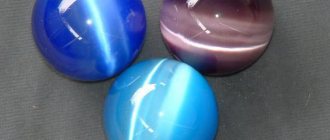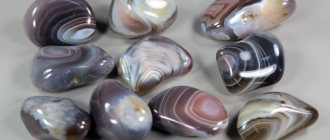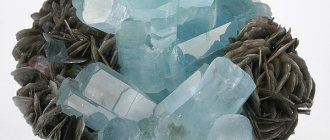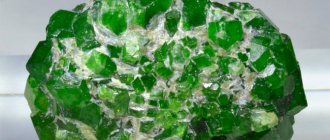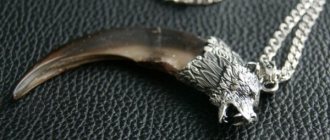The very concept of "geode" is of Greek origin - "geode". This word denotes an object similar in shape to the Earth, that is, spherical. Geodes are round formations in the rock, their crust is hard, and inside there is a void, often filled with crystals of precious stones.
Such objects could vary in size - from 1 cm to 1 m. Small geodes, whose diameter is less than even a centimeter, are called tonsils. Large formations, especially those that can accommodate a person, are called caves. There are few such finds, and each of them bears its own name. These formations do not necessarily have rounded shapes - modern scientists call geodes all cavities in the rock, inside of which crystals of amethyst and other stones grow.
Education
A geode can form quite quickly. This occurs when crystals grow rapidly inside a closed space, often cavities in the array. The minerals inside such formations do not necessarily become crystals; sometimes they are deposited on the walls of the nodule, building up layer by layer. Such finds look very beautiful in cross-section.
Voids, of course, are not only made of amethyst; they are very different in their composition. Mineral deposits in bubbles and cracks in earth rocks occur due to proximity to hydrothermal vents. And, if in ancient times Pliny described formations with clay inside, then in our time mineralogists value nodules with crystals.
Underground water with minerals dissolved inside, getting inside the air bubble, gradually dries out, due to which the concentration of salts increases, and the crystallization process begins. Most often, crystals from substances found in mineral waters are found inside the voids. Calcium, silicon, barium, sulfur, etc. are most often found by mineralogists inside nodules.
Topic: 5 ways to verify the authenticity of amethyst stones
How do crystals store information and knowledge?
Scientists have found that there are triangles on the edges of the crystals, indicating the presence of knowledge in them. Only a specific person can receive this information. If such a person appears, the stones will give him their true insides.
Crystals are capable of transmitting vibrations, awakening higher powers of consciousness, and balancing mental forces. Therefore, they are often used in meditation. Previous civilizations stored information in stones. For example, rock crystal was considered the precious stone of the gods. Crystals were revered as living beings. Even "cosmos" had the original meaning of "precious stone."
What is a druse?
A druse is a set of crystals fused together, usually located chaotically and very closely. In this case, the ends of crystallized gems can be directed either in one direction or in a completely haphazard order. A druse is part of a geode.
About the same thing can be seen when looking at a regular hair brush. The similarity of crystal clusters with this accessory is so obvious that in Russian the concepts of “druze” and “brush” are synonymous. Both of these words are used with equal frequency.
From the point of view of mineralogy, for a formation to be considered a druse, two fused crystals are sufficient. However, entire crystalline clusters are still called brushes. Druses in which crystals grow from the center are called flowers.
Structure of nodules
Typically a relatively small geode (2-30 cm) has the shape of a flattened sphere. Such formations often occur in rocks of sedimentary origin, such as limestone.
The outside of the amethyst geode has a thin bark that may have gaps in it, but it is strong enough to hold its shape. The outer crust is composed of silica. It is therefore not surprising that the crystals inside are most often some type of quartz. Often this is amethyst, chrysoprase, white or rose quartz, etc. Chalcedony or agate nodules are also found.
The inside of the geode is most often covered with small pointed crystals that grow unhindered, since there is no hindrance to their development. The edges of such crystals are very clear. Often, due to crowding, crystallized minerals grow together to form druses. Sometimes a whole crystal monolith forms inside the voids.
On topic: Properties of amethyst stone. Its magical properties according to the signs of the zodiac
Geode structure
The ancient Roman scientist Pliny wrote about geodes as stone containers filled with clay, but other substances in the form of fused crystals - druses (brushes) can also act as filler. The German word “Druse” is translated into Russian as “brush”.
The crystals are in the geode in great cramped conditions and disorder, or, conversely, free and lonely. They can grow without any system, or in a certain direction, most often reaching towards the center. In this case, the central part of the geode may remain empty, or the crystals form a mineral monolith there. Due to the chaotic arrangement of the crystals, the intergrowths are called brushes; the crystals in them are arranged as freely and in different directions as the bristles in a brush.
Mineralogists believe that two crystals growing on the same base can already be called a brush. The size of the crystals in druses is usually very small, only a few millimeters, but due to their large number, in general, the brush has a very attractive appearance.
Geodes are formed due to the natural growth of crystals in a space closed on all sides by rock. Minerals accumulate in them gradually, sometimes the process occurs with crystallization, sometimes they remain a coating with layers of gems. Such specimens look the most interesting and attractive.
Sometimes substances brought there by groundwater settle in geodes. These substances were once dissolved in water, but after entering the geode, the water left, leaving a sediment on the walls of the sphere - compounds of silicon, calcium, and other chemicals.
The outer part of the geode consists of silicon dioxide and its polymorphic modifications - quartz, chalcedony, chrysoprase, agate. Despite the small thickness of the walls, the “product” turned out to be strong enough to hold both its shape and contents.
Types of geodes
Voids that occur within sedimentary rocks are located in nodules. A concretion is a round formation resulting from the growth of crystals. Crystallization is not always uniform, so not every nodule has a spherical shape, but all of them have a radial structure. A geode occurs as a consequence of changes in the crystals within the nodules.
There are also geode voids of recrystallization. This happens when the already grown crystals dissolve again, the crystallization process starts again. But, since the concentration of minerals is no longer so high, and the impurities washed out by groundwater are not renewed, a void gradually forms in the enclosed space of the nodule.
Limonite geode is also not uncommon. This formation occurs due to the oxidation of iron ore rocks found in nodules.
Quartz nodules are often found in limestone and chalk rocks. Geodes filled with precious stones are often found in them. Of course, such finds are of particular interest to gem lovers. Precious crystals of amethyst and other stones often form druses.
Metasomatic geode objects arise due to the incomplete replacement of some mineral formations by others. They do not represent any jewelry or aesthetic value, but are very important for scientific research. Such a geode helps to better understand the processes that occur in sedimentary rocks.
Total information
Scientists call geodes any voids in natural massifs, the walls of which are covered from the inside with crystals of minerals, regardless of their size and shape. The crust of the geode is strong and hard, there is emptiness inside it, and on the walls there are minerals in the form of crystals of semi-precious stones.
Geodes differ from each other not only in their “filler”, but also in size, some of them are small, about 1 centimeter in diameter, others are large, more than a meter in diameter. Small geodes are called tonsils, large geodes are called caves. The most common sizes of geodes found in the rock are from 2 to 30 centimeters in diameter.
Large geodes are rarely found; their dimensions can be such that an adult can fit in them; such specimens are given personal names.
Gemstone nodules
Voids with precious druses are the most valuable. They are used both in jewelry and as museum exhibits. Amethyst geodes and druses are very popular. The largest formations, which can easily accommodate a person, are left where they were discovered and are tourist sites.
Topic: Widow's stone: amethyst or alexandrite
Geode voids of enormous size, larger than human height, are exhibits in Brazilian and Uruguayan museums. It is in these countries that the largest amethyst deposits are concentrated. Small tonsils are set in gold and silver and sold as jewelry.
In Russia, they also find very beautiful objects with deposits of amethysts, agates, sapphirine, hematite and chalcedony. Agate formations are often found in northern Asia. In the Urals, geodes are called “gnarly”.
Application
Given the not-so-small size of the agate geode, it is rarely used as an insert in jewelry. But this does not apply to those cases when the cavity is formed of very small sizes, which allow it to be inlaid into the cast of jewelry. As a rule, the stone is not processed, but is left in the form in which nature created it. The most common products:
- pendants;
- beads;
- bracelets;
- necklaces;
- massive earrings.
An agate geode, as a rule, becomes a very beautiful interior decoration, especially when it comes to a personal office, living room or bedroom.
How are geodes mined?
A geode with crystallized amethysts or other gems inside is a highly valuable object that is especially coveted by mineral and gemstone collectors. Geodes are not mined on an industrial scale, as is the case with regular gemstones. Such semi-precious voids are often deliberately sought by scientists or simply hobbyists who are passionate about their work.
At the same time, experienced specialists check not only new discovered deposits, but also old mines at any depth. The search for precious formations occurs virtually by hand and by touch. The only thing you can rely on here is intuition, and not geological exploration knowledge. The seeker relies only on luck and his own experience in searching for nodules.
During the search process, entire layers of rocks are sifted, river sediments are excavated and mineral veins are examined. However, there are no guarantees that a geode found with great difficulty will not turn out to be with ordinary quartz, and not with amethysts or citrines. We can say that the search for such jewelry is a real lottery.
History of geodes
Amethyst has always been considered a companion to smart, sober people. The first data date back to the Middle Ages. At that time, in Europe and the countries of the East, clergy decorated their clothes, icons, crosses, and wore rings with gems. When ordaining a cardinal, he was given a ring with an amethyst.
Gem crafts were made in China, Ancient Greece, and Ancient Rome. The ancient Greeks inlaid crowns and cups with stone. The Italians put a stone in a glass of wine. In Russia, the gem was worn by noble persons, emphasizing their position.
There are different beliefs associated with amethyst. In ancient times, a man gave a stone to his beloved woman to preserve his love. If the husband died, the widow wore an amethyst ring as a sign of eternal love.
This custom is associated with a legend. One day, a woman had a grief - her beloved husband did not return home. She waited and searched, but to no avail. One morning she went to the sea and disappeared, and purple gems were discovered on the shore.
Healing properties of stones
Over billions of years of being in the bowels of the Earth, stones have accumulated a large amount of energy. They constantly exchange energy with the environment. The vibrations of gems are close to human vibrations, which allows them to be used to treat various diseases, aligning and stimulating energy flows in the body.
Our catalogs present a wide variety of all kinds of stones and minerals for lithotherapy. Confused by the diversity? Do not worry! “Your” stone will definitely give a signal that it suits you. By looking at photographs or communicating with the mineral in person, you will feel an internal response, warmth or other sensation that will help you decide on your choice. You can select gems based on your zodiac sign and other parameters. There are different methods, which you can also read about on our website.
Some prefer lithotherapy minerals in their raw form, while others prefer polished and molded ones. Choose magic stones according to your taste and needs. Any of them will be beneficial.
Lithotherapy for quality changes in life
Numerous studies by scientists and observations by lithotherapists confirm that minerals have a beneficial effect on the human body, and can also help it on an eventual life level. For example, crystal magic is effective for attracting good luck, increasing self-confidence and other purposes. Some people call lithotherapy medicine of the 21st century.
It is known that the lamas of Tibet prepare medicines and potions using the power of stones. For practices, pyramids, rosaries, and balls made of natural minerals are used, which enhance the conductivity of various energies and help in solving various problems. This is how the stones charge water for longevity.
Chinese folk healers also actively use stones as biostimulants on biologically active points of the body. Thanks to the vibrations of certain types of gems, a person’s energy is harmonized and his health is restored.
The well-known Ayurveda also cannot do without the help of stones. Indian healers use minerals to relieve pain, cleanse and charge the chakras.
The art of Feng Shui involves the use of stones to enhance positive energy flows and dispel negative ones.
Knowledge about stones for beginners and practitioners
For those who want to learn more about lithotherapy, we have collected a lot of information on our website. The information and recommendations provided are based on the extensive experience of mankind and modern research. This will help you choose and buy stones correctly.
Natural stones - love for life
The online store Stones Market invites everyone to join the world of natural stones and minerals. We are proud of our range, all products are of high quality and at affordable prices. Using stones and noticing their positive effect, you will be convinced of the effectiveness of lithotherapy and understand why selling natural stones has become our life’s work.
If you want to improve your life, improve your health, decorate yourself, or choose a worthy gift for your loved ones, natural stones and products made from them are the best choice!
Precious geodes
Geodes with gem crystal druses are highly collectible. They are used both as decorations and as museum exhibits. Geodes filled with amethysts are especially popular. The largest of them are preserved in the places where they were discovered as natural attractions.
Geodes larger than a person are on display in museums in Brazil and Uruguay. Small amethyst almonds are cut, set in precious metals and sold as jewelry.
In our country, highly decorative geodes with internal deposits of quartz minerals are found. Agate, sapphirine chalcedony, as well as amethyst and hematite are minerals that often fill (or form) geodes found in Russia. Extremely expressive agates in geodes are found in the north of the Asian continent.
The French Alps provide geodes strewn with calcite crystals on the inside. Geodes with celestine are brought from Africa and Asia. Very beautiful azurite geodes are found in America. In the Urals, a mineralogical hobby is very popular: searching for quartz “geeks” (as geodes are called here) with rock crystals inside.
Where do Druze meet?
They are most often found in geodes. What is a geode? Often, in the center of a young mineral, in this case agate, unfilled spaces-cavities remain, which are subsequently filled with crystalline quartz - druses of rock crystal, amethyst, and other inclusions.
Geodes come in different shapes, but most often they are round or oval. Geodes can be small, up to 1 cm in diameter (tonsils), or very large, up to 1 m.
Agate druses most often consist of amethyst and rock crystal. In Russia, these are mined on the Kola Peninsula and Magadan. Large geodes come to us from South America.
Agate jewelry is beautiful in itself, but jewelry with agate druses is doubly beautiful. Their beauty lies in the natural combination of magnificent natural stones, the extraordinary play of colors and colors. In order to emphasize or highlight the exotic colors, manufacturers can paint or spray them with metals and paints. The result is fantastically beautiful gems.
If an agate druse is used for beading, then in order for it to hold tighter, small beads are taken. It braids the gem more tightly and tightly, preventing it from falling out of the jewelry. In lithotherapy, ground and polished drusen are used for acupressure.
